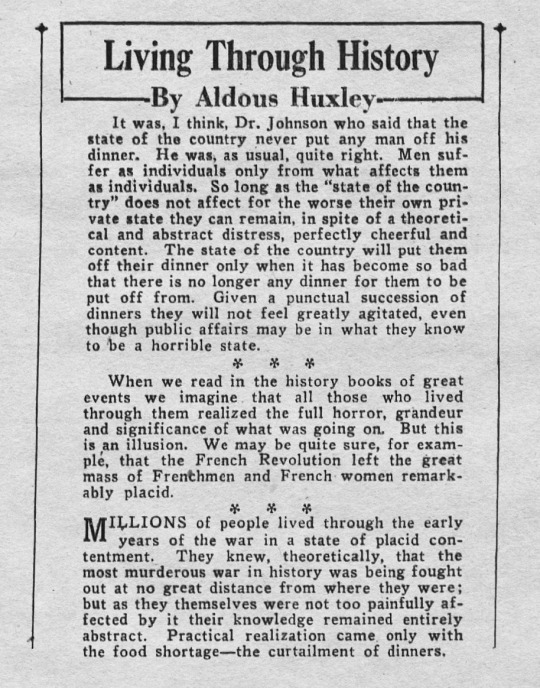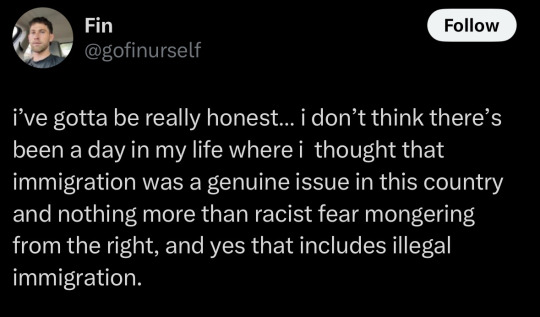Adrian, they/ them, 25, USA living in Aotearoa ● currently Jet Lag posting ● icon is Adrien from Always Raining Here, cropped by @createcore
Don't wanna be here? Send us removal request.
Text

Do not think for a moment that this admin is only going after trans folks. They are ultimately going after the whole LGBTQ community. They start small, like getting rid of a hotline option, then go BIG.
16K notes
·
View notes
Text
so i am going to need everyone who enjoyed the librarians: the next chapter and the house of cards to watch edgar allen poe's murder mystery dinner party by shipwrecked comedy (available on youtube here!)

have you ever wondered what a dinner party hosted edgar allen poe and attended by great literary authors like emily dickinson, mary shelley, charlotte brontë, oscar wilde, george eliot, louisa may alcott, ernest hemingway, hg wells, and fyodor dostoevsky would be like? well no more! it's an excellent series that answers that very question!
it was written by sean and sinéad persaud (who wrote this episode!) and they also star in it as edgar allen poe and lenore the lady ghost respectively. it is not only hilarious, it's heartfelt. it is such a labor of love for everyone involved and that shines through. and this series is one i cannot recommend enough.
i hope i have convinced you to visit this masterpiece! i am off to rewatch! <3
64 notes
·
View notes
Text


Bruce Springsteen visiting his childhood home in New Jersey. 1980s | 2025.
4K notes
·
View notes
Text
young man. what is that you have found.
I said young man. you picked it up off the ground.
I said young man. you should put that thing down.
I don't think! that! you! should! eat that!
22K notes
·
View notes
Text



Victorian drag portraits, anyone?
These photos (1, 2, 3) from the James Gardiner Collection are open access and available to view on JSTOR courtesy of the Wellcome Collection.
Dating from the 1850s to 1890s, the hand-colored portraits come from a Victorian album of 35 cartes de visite showing private and theatrical female impersonation. While many of these performances were intended as entertainment, the images also gesture toward gender nonconformity and queer expression.
See more from the album.
323 notes
·
View notes
Text
I am small and I can't do very much. That is the despair of an individual in a big and violent world. But the plants teach me it is okay to be small. Everything is either small, or made of things that are small. We are all connected. Symbiosis.
So, on the subject of bugs.
It is the fourth summer of the Meadow. My plants grow strong and wild and cover more space than ever before. I have worked to eradicate the invasive lawn grass and carefully curate large clumps of only native species (with a few esteemed naturalized weeds allowed---I have no quarrel with Chicory, it has a positive effect on the ecosystem).
I have tall, huge native Field Thistles, multitudes of tough and aggressive evening primrose, wild strawberry spreading everywhere, a dozen vigorous gray-headed coneflowers, giant clumps of cup-plant, and so many asters and goldenrods that I've had to start targeting them in my weeding.
Yes, yes, I have the showy ones like purple coneflowers and black-eyed susans, but I also encourage and cultivate weird little weeds that are too inconspicuous or ugly to be often planted on purpose. White avens, lanceleaf frogfruit, nettle-leaf vervain.
There are too many plants. I'll spend forever listing them all. What is really interesting, is what's happened with the bugs.
Every year, there has been a much bigger variety and population of insects. I am both seeing many more species, and seeing the same species in much, much larger numbers. Even on the same plants that were already there 4 years ago, I can see way more bugs.
Flower flies, for instance. There are tiny yellow and black flies known as flower flies that are very beneficial for gardeners, because their larvae are predators that attack aphids. It used to be that I could often see a dozen, but now I see hundreds of them every time I go outside!
Or wasps. There are more species of wasps than I possibly could have imagined. It used to be that I would only see the reddish paper wasps, the ones that make big paper nests in the eaves of your house, but now, there are dozens of different wasps. Some are black, others black and white, others black and yellow, others black and brown, and they come in all different sizes. A bunch of blue-black wasps with white stripes live in the log next to my pond.
I identified them and looked up the species, and they had not been studied at all since the 1960's. Supposedly they are solitary species, but several different wasps have made nests inside the log right next to each other. That's the first interesting thing. The second interesting thing is that the nests were first inhabited last summer, and the same species of wasp still lives in them, so their town has been inhabited for multiple years instead of being abandoned when the larvae emerge. Has the next generation taken over the old nests? I am observing something about the species that is not known to science.
Wasps are hated and feared, but my wasps have never been anything but peaceful and polite, and they have so much beauty and importance in the ecosystem.
And the bees! I am observing bees this year that I had never even heard of before. Many of them are so tiny, I doubt they could even reach the nectar in large flowers like purple coneflower. What if the small, inconspicuous flowers are essential for smaller pollinators like the tiny bees? That would make sense. Different flowers evolved to attract different bees.
Beetles, ants, leafhoppers, flies, moths, butterflies, all kinds of bugs. Specific plants attract specific bugs, but it is not the plants individually that restore insect biodiversity, it is the way the plants interact and form a bigger ecosystem.
What I mean is, as my garden grew, the increase in bugs was not linear in relationship to the plants, it was exponential. The combination of the many different plants into an ecosystem attracted many more bugs than would be expected from the sum of each plant individually.
I remember the emptiness and barrenness before. I see it around me when I visit other places. The disappearance of bugs. The insect apocalypse. It's so clear to me now. The cause is biotic homogenization. I call it plant sameness.
Everywhere around me, landscapes have been made into expanses of the same few plants. But when plant sameness is replaced by variety and diversity, many plants interacting in many different ways, everything changes.
1K notes
·
View notes
Text





Forgive me, I am soft and warm, but cruel and a coward, I know nothing but goodbye, goodbye
8K notes
·
View notes
Text

i feel strongly about this
120K notes
·
View notes
Text
do me a favor and reblog this and put in the tags what time it is for you and what you're currently doing/thinking about
#6:40 am#I am delaying getting up for work (dog walking)#And hoping my roommates don't start fighting downstairs :(#It is too early for any of this. We should all be asleep#A curse on morning people and morning dogs
21K notes
·
View notes
Note
Is it possible to “beat” mental illness? Or does it depend on type/circumstance?
“Beating” mental illness is actually the norm, not the exception. Most people who have a major depressive episode never have another one. 80% of people who survive their first suicide attempt never make a second attempt. 93% of Borderline Personality Disorder patients achieve remission. Up to 74% of people with Obsessive-Compulsive Disorder achieve significant clinical improvement in their symptoms, and 20% achieve full remission. Half of Generalized Anxiety Disorder patients achieve remission after the acute phase of treatment. Even disorders with relatively low rates of remission - bipolar disorder, schizophrenia, schizoid personality disorder - generally become milder and easier to manage as you age. Psychiatric symptoms tend to peak in your 20s and generally drop off as you get older, especially if you seek treatment.
This is why the narratives we use to talk about mental illness matter so much. Right now, the dominant narrative is that mental illness is “an imbalance in the brain” and that it’s largely something that people are born with. There are upsides and downsides to this. The upside is that it promotes the idea that mental illness is not the ill person’s fault, and it helps us understand that mental illness can impact anyone, regardless of their life circumstances. The downside, however, is that it’s sort of given us this idea that mental illness is inborn and unchangeable. People have taken on the idea that “that’s just how my brain is”, when the reality is that, for most people, mental illness is less of a stable trait for them, and more of just a shitty thing that they are going through for a little while. The idea that mental illness is just “in your brain” also erases the very real connection between your life circumstances and your mental health - while it’s very true that a wealthy person in a happy marriage can become depressed, it’s also very true that living in poor conditions and being in an abusive marriage can be the cause of depression, and that improving your life circumstances can lessen or eliminate mental health conditions.
If you have a mental health condition, it’s very important that you not resign yourself to the idea that you’re going to be like this forever. Chances are, you won’t. Even if you have a mental health condition that is associated with low rates of remission, it is possible to make leaps and bounds in your functioning, and to get to a point where managing your condition becomes second nature to you. Our understanding of mental illness is improving every year, and new therapies and treatments are becoming available all the time. If you seek treatment and do your best to manage your condition, you have every reason to believe that you will make huge improvements.
Hope this answers your question!
51K notes
·
View notes
Text

Trans protesters go topless outside government building to fight anti-trans ruling
ive seen a number of people ‘cisvestigating’ protesters. Like they’re not convinced that all the women here are trans. They’re so close to the point it’s painful
8K notes
·
View notes
Text

Aldous Huxley in The San Francisco Examiner, February 18, 1933
2K notes
·
View notes
Text


Five months into Trump's presidency, and we are in a war.
Did his supporters have that on the bingo card?
8K notes
·
View notes
Text
alright how can i take this song completely out of context to fit my ocs 💭
#Lani keeps feeding me Mountain Goats songs while I try to make them fit my book#I'm really liking Hebrews 11:40 for Iselder though
768 notes
·
View notes
Text
happy pride month to HIM
17K notes
·
View notes



